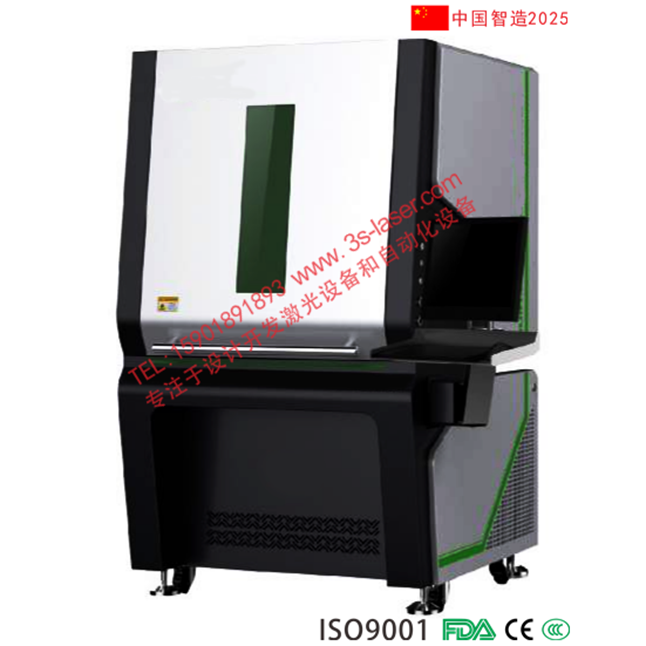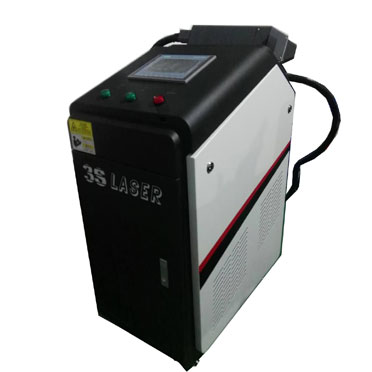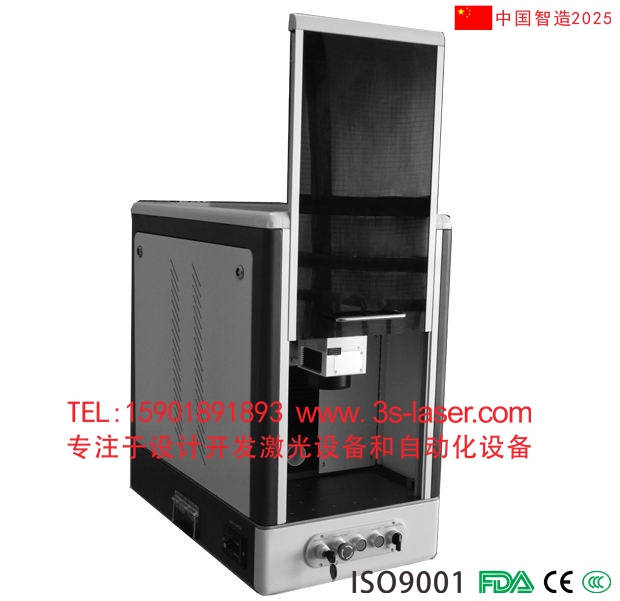Nanosecond laser, picosecond laser, femtosecond laser, can you tell the difference?
Add time :2017-10-28 Click :5458=10-3秒1μs =0.000001=10-6=10=10=10-15 S
The meaning of ultrashort pulse laser has long been tried to be micromachined by laser. However, the long pulse width and low laser intensity cause the material to melt and vaporize continuously. Although the laser beam can be focused into a very small spot, the thermal shock to the material is still very large, which limits the processing accuracy. Only by reducing the heat effect can the processing quality be improved. When the laser pulse time of picosecond is applied to the material, the processing effect will change significantly. As the pulse energy rises sharply, the high power density is sufficient to peel off the outer electrons. Because the interaction time between laser and material is very short, ions have been ablated from the surface of the material before transferring energy to the surrounding material, which will not bring heat effect to the surrounding material, so it is also called "cold working". With the advantage of cold processing, short and ultrashort pulse lasers are applied in industrial production.
Laser processing: long pulse VS ultrashort pulse processing energy injected very quickly into a very small area of action, instantaneous high energy density deposition caused changes in the mode of electron absorption and movement, avoiding laser linear absorption, The effects of energy transfer and diffusion fundamentally change the mechanism of laser-matter interaction.
Position after long pulse laser processing
The wide application of laser processing after ultra-fast laser pulse processing laser machining includes high-power cutting welding micro-machining drilling marking cutting texturing stripping isolating and so on. The main uses of various means of laser processing are:
1. In the design of drilled circuit boards, ceramic substrates have been used instead of conventional plastic substrates to achieve better thermal conductivity. In order to connect electronic components, holes of up to several hundred thousand μ m are usually drilled on the board. Therefore, it is very important to ensure that the stability of the substrate is not affected by the thermal input during the drilling process. The picosecond laser is an ideal tool for this application. Picosecond laser can complete the hole processing by impact drilling and ensure the uniformity of the hole. In addition to circuit boards, picosecond lasers can also be used for high-quality drilling of plastic films, semiconductors, metal films, and sapphire. 100 μ m stainless steel sheeting, boreholes, 3.3ns vs 200fs, 10,000 pulses, near ablation thresholds:
2. The line can be formed by cutting the superposition of laser pulses by scanning. It usually takes a lot of scanning to go deep into the ceramic, until the depth of the line reaches a sixth of the thickness of the material. A single module is then separated from the ceramic substrate along these lines. This separation method is called an underscore. Another method of separation is ultrashort pulse laser ablation, also known as ablation. The laser ablates the material, removing the material until it is cut through. The advantage of this technique is that the shape and size of the holes are flexible. All the process steps can be accomplished by a picosecond laser. Different effects of picosecond laser and nanosecond laser on the marking of polycarbonate materials.
3. Linear ablation (removal of coating) another application that is often considered to be micromachined is to remove the coating accurately without or slightly damaging the substrate material. Burn can be a few meters wide line, can also be a few square centimeters of large area removal. The thickness of the coating is usually much smaller than the width of the ablation, so that the heat can not be transferred in the side. Thus, a laser of nanosecond pulse width can be used. The combination of high average power laser, square or rectangular conducting fiber, flat-top light intensity distribution makes laser surface ablation applied in industrial field. For example, use Tonghuiundefineds TruMicro 7060 laser to remove coating on thin-film solar cell glass. The same laser can also be used in the automotive industry to remove corrosion resistant coatings in preparation for subsequent welding.
4. Surface structuring can change the physical properties of the material surface. According to the lotus effect, the hydrophobic surface structure allows water to flow from the surface. Using ultrashort pulse laser to create submicron structure on the surface can realize this characteristic, and the structure can be precisely controlled by changing laser parameters. Opposite effects, such as hydrophilic surfaces, can also be achieved, and micromachining creates larger structures. These processes can be used in engine fuel tanks to produce wear-reducing microstructures or to weld plastics on metal surfaces.
5. Engraving is the creation of three-dimensional shapes by ablating materials. Although the size of ablation may exceed that of micromachining in the traditional sense, the precision it requires is classified into such laser applications. Picosecond laser can be used to process polycrystalline diamond cutting edge of milling machine. Laser is an ideal tool for machining polycrystalline diamond, which is an extremely hard material for milling cutter blade. Cutting slots and teeth of milling cutters are machined using engraving technology. In this case, the advantages of laser are non-contact and high machining accuracy. Micromachining has a very broad application prospect. More and more household products are coming into our field of vision through laser micromachining.
Laser processing belongs to contactless processing, has many advantages, such as less follow-up technology, good controllability, easy integration, high processing efficiency, low material loss, low environmental pollution and so on. It has been widely used in automobile, electronics, electrical appliances, aviation, metallurgy, etc. Machinery manufacturing and other industries play a more and more important role in improving product quality, labor productivity, automation and reducing material consumption.= progress.







